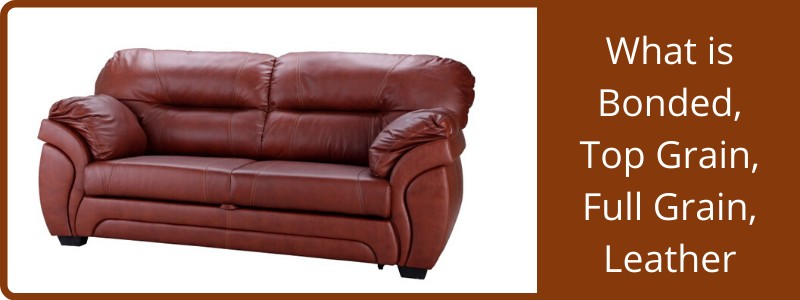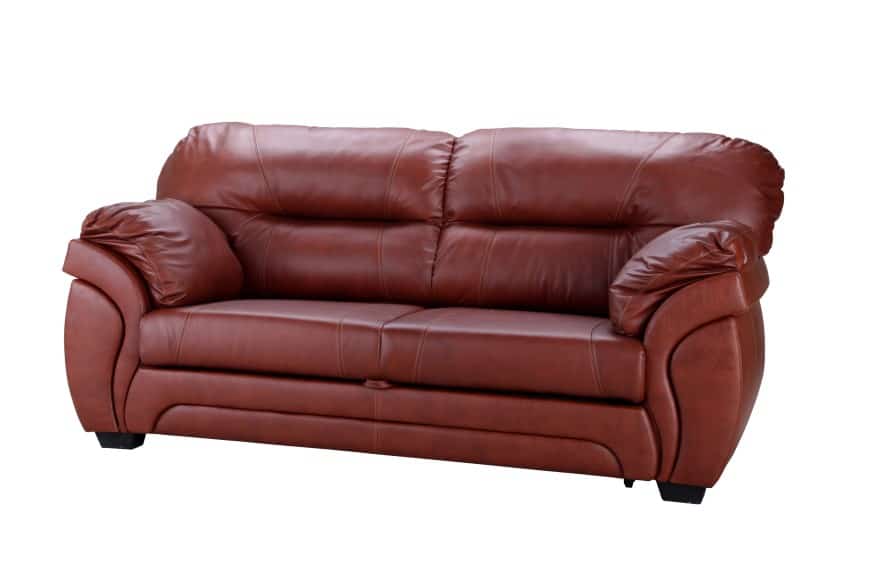It’s not a major you can declare when you enroll in college, but the history of leather upholstery is filled with fascinating facts that stretch back in time further than you might have imagined. Archaeologists believe that leather artifacts date back to 40,000 BC during the Earth’s Paleolithic era.

What started as leather animal skin wraps to protect early man from the elements morphed into tool covers and cases crafted to protect quivers and projectiles.
While the Greeks get credit for making the first leather couches in the 7th Century, Egyptians were premier chair makers creating ebony, ivory, gilded or carved wood frames for leather seats as far back as 3100 BC.
Over time, craftsmanship and materials flourished as master furniture makers produced pieces for high society and royalty.
Today, leather upholstery remains a favored material despite the fact that it’s usually pricier than textiles. But these days, you have leather choices. Which type will you choose when you shop for your next sofa?
What is Bonded Leather?
As the leather chosen by folks who love the look of leather but not the price, bonded leather starts out as scraps of leather that remain behind after tanneries use large hides to upholster furnishings.
These scraps are sent to specialty mills and pulverized into tiny pieces before being spray-glued to a synthetic backing like polyurethane. Chairs and sofas made of bonded leather feel like suede to the touch.
Like all upholstery materials, there are varying grades of bonded leather available on the market, and when good polyurethane backing is used, it can be hard to differentiate between “the real thing.”
That stated, bonded leather is by far the most controversial material of all, which is why you may wish to view this ABC TV News feature before you shop.
What is Top Grain Leather?
Top grain leather happens to be the most common type of hide used to craft furniture upholstery and it is considered to be of high-quality.
Either buffalo or cow top hide are tanned to produce top grain leather. Hide harvested from cows is thinner and more flexible than that of buffalo hide.
During the manufacturing process, the split part of the hide is removed and positioned to hide marks and imperfections, and then the hide is sanded to make the surface smoother.

At this point, dyes are used to give the hide a uniform look before a stain-resistant finish is applied. As a result, top grain leather offers the very best in color longevity and an extremely comfortable feel.
What is Full Grain Leather?
If the sofa you’re considering comes with a tag identifying it as full grain leather, you’re getting a product that represents the strongest, most durable part of an animal hide located just below the hairline.
This earthy-looking leather won’t be sanded, buffed or snuffed (a term used by the tanning industry to describe “a degree of sandpapering between buffering and corrected grain”), so the natural characteristics of the hide are showcased rather than hidden.
Full grain leather has more strength and it’s more durable. Over time, it develops a patina not seen on other leather types, that is partially due to the aniline finish applied by stain or dye that further enhances the natural grain.
Discriminating leather fans point to the fact that full grain leather sofas breathe because they’re not weighted down by thick finishing coats, an attribute that is sought by discriminating shoppers.
Differences Between Bonded, Top Grain, Full Grain Leather
Experts say that differences between these three leather types fall into three categories:
- 1) Quality and cost,
- 2) Appearance and durability and
- 3) Aging and character.
Use these criteria when shopping for the leather sofa that best suits your unique situation.
Quality and cost
–Full grain leather is literally the best; highest quality type money can buy. Literally. Manufacturers note that not only is it the most expensive type of leather but it’s the hardest to work with, ergo the killer price.
–Top grain leather comes in second on the quality scale because the outermost layer of the hide must be harvested. As a result, this leather is thinner, easier to work with and is priced below full grain hides.
–Bonded leather is the least expensive material of all and while it could appear to mimic the two aforementioned upholstery materials, you’re getting a sofa that is primarily made of synthetics that won’t stand up to time.
Appearance and durability
-The surface of full grain leather “tells a story and reveals natural imperfections,” say leather experts. It’s strong and durable, the ultimate in breathable material and prolonged contact with the surface won’t retain moisture.
-Natural grain leather is the material you seek if you insist upon upholstery with the fewest imperfections and blemishes. It’s the most uniform of all three types, but at a compromise: When all of that sanding goes on, the strongest fibers in the hide can be compromised.
-The biggest downside to choosing bonded leather is its lack of durability. You get the look and feel of genuine leather, but bonded products won’t hold up over time. Another name for bonded leather is faux leather, but by either name, these sofas are less comfortable, harder to repair and cost a fortune to reupholster.
Aging and character
-The longer a full grain leather couch is enjoyed, the more beautiful it becomes. The patina referenced earlier gives the upholstery a rich, burnished look that can’t be duplicated. Bottom line: the more you use it, the more character it develops.
-Top grain leather may be mistaken for full grain leather, but the proof is in the aging process because this leather doesn’t behave in the same way due to the unique refinishing process this leather goes through and the quality of the original hide. Because this leather is thicker it won’t breathe as well as full grain leather, no matter how long it ages.
-Yes, its affordable, easily manufactured and offers the leather look you crave. We love this softness comparison from the Furniture in Fashion blog: “On the scale from velvet cushions and genuine leather cushions [bonded material] stays exactly in the middle.” But here’s where the honeymoon ends. Bonded leather can crumble from the get-go, so keep a dust pan handy; you may use it daily. Character? Not so much, say experts.
Resources used
https://www.leathersofaco.com/blog/history-fine-leather-furniture/print.htm
https://www.officechairs.com/blog/differences-between-real-bonded-faux-leather
https://buffalojackson.com/blogs/insight/full-grain-leather-vs-top-grain-leather
https://mahileather.com/blogs/news/full-grain-leather-what-how-and-why
http://cool.conservation-us.org/don/dt/dt3184.html
Related Posts
- How to Protect Sliding Glass Doors from Burglars: Essential Security Tips
- How Long Do Sliding Glass Doors Last? Durability and Lifespan Explained
- Here Are Some Pros and Cons of Textured Walls in Homes
- Why Do Sliding Doors Get Stuck? Common Causes and Solutions
- Comparison of Knockdown Drywall Texture vs Orange Peel
- Some FAQ (Frequently Asked Questions) About Wall Paneling for Homes
Leave a Reply